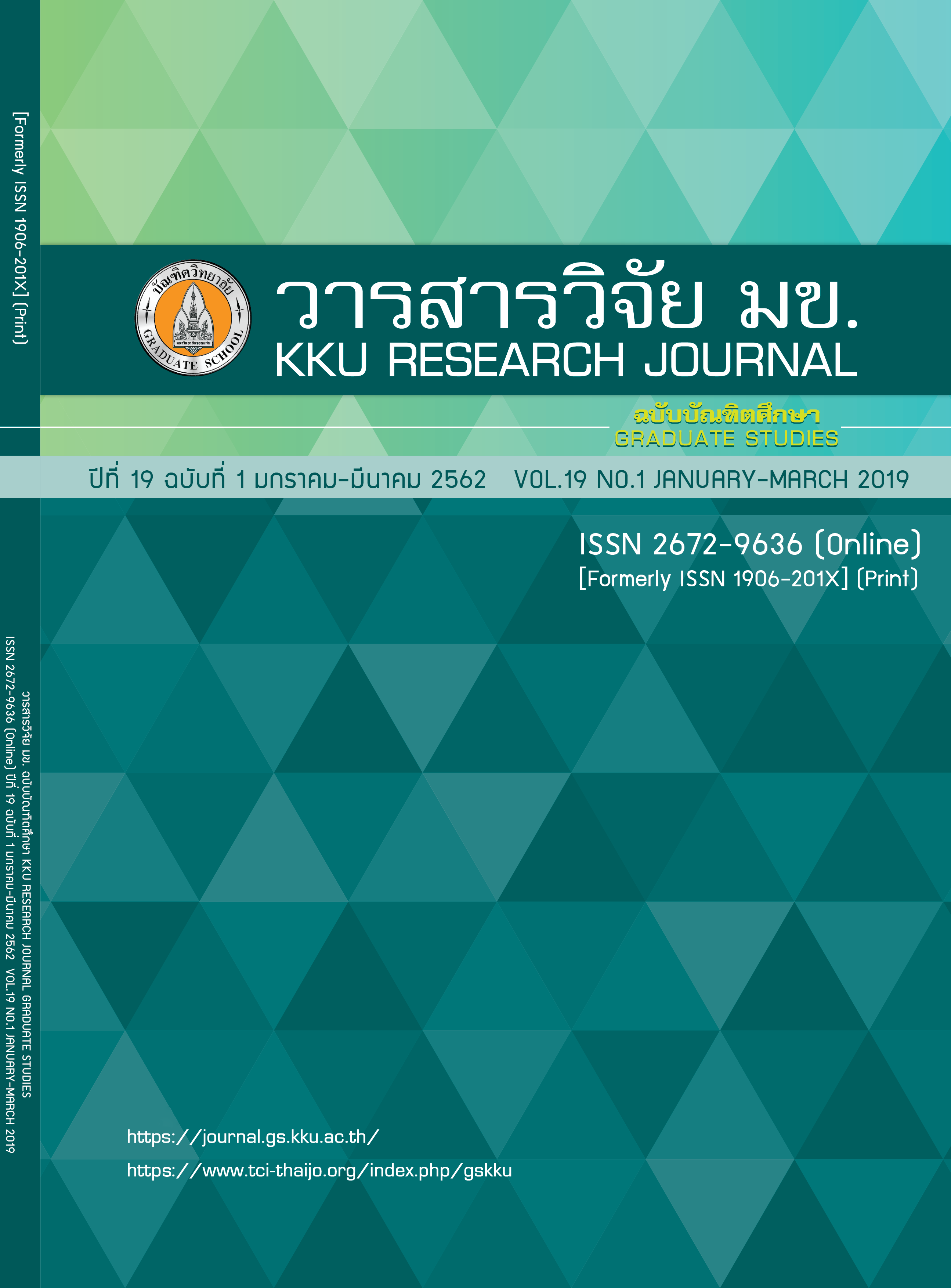Decision Supporting Systems for Agriculture Planning
Keywords:
Decision supporting systems, Agriculture planning, Agricultural integrationAbstract
Most of the people in Thailand are agriculturists. There are many economic plants including rice, corns, and tropical fruits. Therefore, most of the areas in Thailand are used for agriculture which results in various types from domestics to export sales. One of the main of the problems of agriculturists is that the current information is not available for the user. Therefore, if the technologies could be applied to help agriculture such as agriculture information, knowledge, cultivation technique, they will help to improve the quality of the product to meet the market standard. The decision support system for agriculture plan could be used to help solving the planning problem. The main advantage of the system is the analysis feature that predicts the most profitable plants and calculates the cost. After the deployment, the satisfactions from the user is in the highest level.
References
2. Electronic Government Agency. Thailand's digital government development plan, 2017-2021. Bangkok: Electronic Government Agency; 2018.
3. Commerce TMo. Export statistics 2014. Bangkok: Thai Ministry of Commerce; 2017.
4. Davies G, Casady W, Massey R. Precision agriculture: an introduction. Water Quality Focus Guide. WQ450; 1998.
5. Ciocoiu CN. Integrating digital economy and green economy: opportunities for sustainable development. Theoretical and Empirical Researches in Urban Management. 2011; 1:33-43.
6. Kraipinit Y. New agricultural management of Thailand. VRU Research and Development Journal Humanities and Social Science 2017; 12:115-127.
7. Turban E. Decision support and expert systems: management support systems. Prentice Hall PTR; 1993.
8. Tian J, Wang Y, Li H, Li L, Wang K. DSS development and applications in China. Decision support systems. 2007; 4:2060-2077.
9. Klein M, Methlie L. Knowledge-based decision support systems with applications in business: a decision support approach: John Wiley & Sons; 2009.
10. Schneider GM. System and method for developing a farm management plan for production agriculture. Google patents; 2006.
11. Lilburne L, Watt J, Vincent K. A prototype DSS to evaluate irrigation management plans. Computers and electronics in agriculture 1998; 3:195-205.
12. Andreu J, Capilla J, Sanchís E. AQUATOOL, a generalized decision-support system for water-resources planning and operational management. Journal of Hydrology 1996; 3:269-291.
13. Jones JW, Tsuji GY, Hoogenboom G, Hunt LA, Thornton PK, Wilkens PW, et al. Understanding Options for Agricultural Production. Decision support system for agrotechnology transfer: DSSAT v3. Dordrecht: Springer Netherlands 1998; 157-177.
14. Galán-Martín Á, Pozo C, Guillén-Gosálbez G, Vallejo AA, Esteller LJ. Multi-stage linear programming model for optimizing cropping plan decisions under the new Common Agricultural Policy. Land use policy 2015; 48:515-524.
15. Wu Y, Liu W, Fan Z. Decision support systems for agricultural water-saving. Chinese Journal of Decision Making and Decision Support Systems 1996; 2:31-36.
16. Tian J, Wang Y, Li H. Applications and development of DSS in China. Working Paper, Xian Jiaotong University; 2004.
17. Yuliang Q, Buzhou M, Jiuliang F. Study on monitoring farmland by using remote sensing and GIS in Shanxi China. Advances in Space Research 2000; 7:1059-1064.
18. Lu S, Wang J, Ren Y, Gao Z. Development of intelligent decision system for regional constructional patterns of eco-economic protection forest system. Acta Ecologica Sinica. 1996; 6:602-606.
19. Aiello G, Giovino I, Vallone M, Catania P, Argento A. A decision support system based on multisensor data fusion for sustainable greenhouse management. Journal of Cleaner Production. 2018; 172:4057-4065.
20. Perini A, Susi A. Developing a decision support system for integrated production in agriculture. Environmental Modelling & Software 2004; 9:821-829.
21. Stafford JV. Implementing precision agriculture in the 21st century. Journal of Agricultural Engineering Research 2000; 3:267-275.



